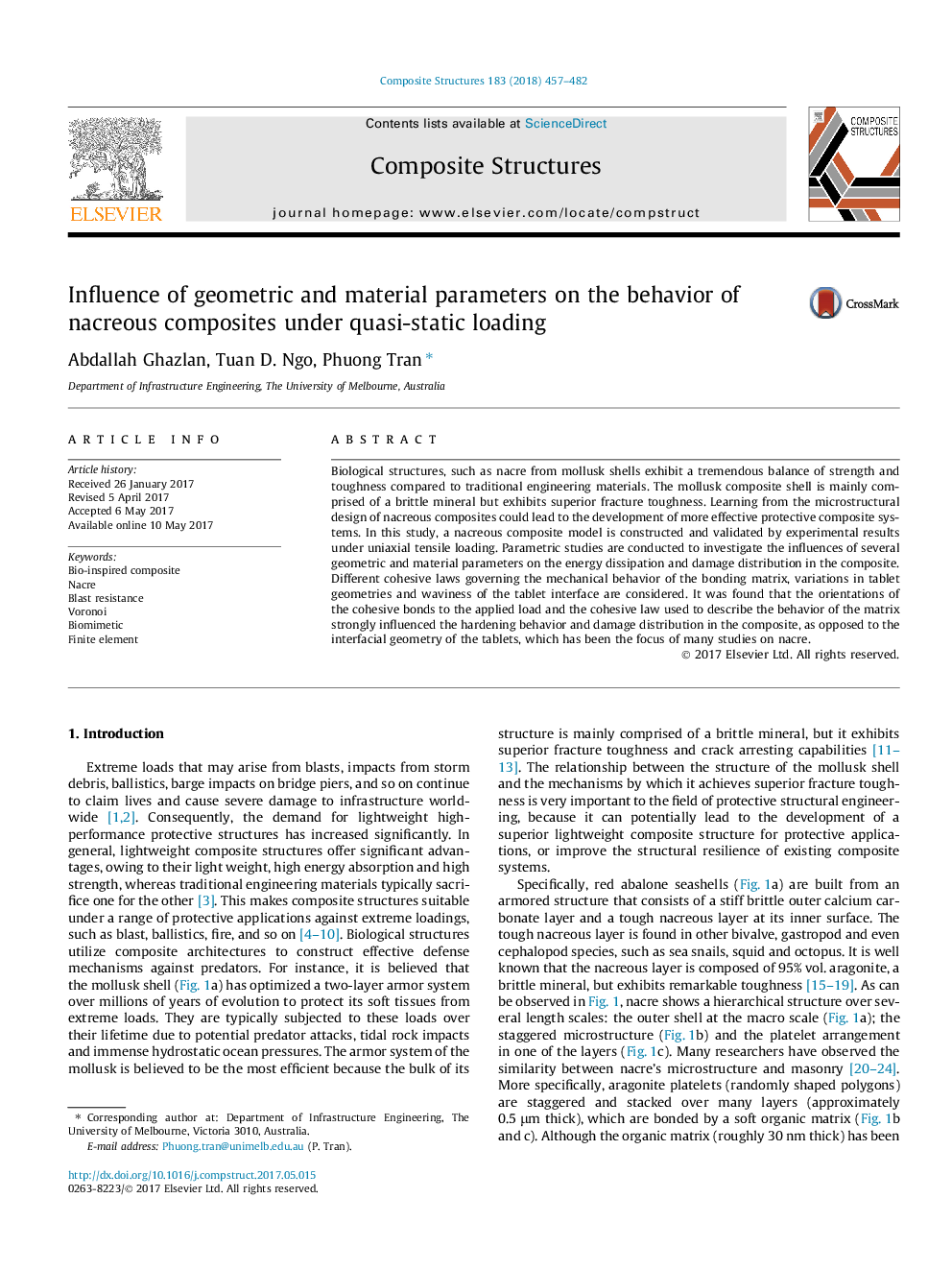| Article ID | Journal | Published Year | Pages | File Type |
|---|---|---|---|---|
| 6705084 | Composite Structures | 2018 | 26 Pages |
Abstract
Biological structures, such as nacre from mollusk shells exhibit a tremendous balance of strength and toughness compared to traditional engineering materials. The mollusk composite shell is mainly comprised of a brittle mineral but exhibits superior fracture toughness. Learning from the microstructural design of nacreous composites could lead to the development of more effective protective composite systems. In this study, a nacreous composite model is constructed and validated by experimental results under uniaxial tensile loading. Parametric studies are conducted to investigate the influences of several geometric and material parameters on the energy dissipation and damage distribution in the composite. Different cohesive laws governing the mechanical behavior of the bonding matrix, variations in tablet geometries and waviness of the tablet interface are considered. It was found that the orientations of the cohesive bonds to the applied load and the cohesive law used to describe the behavior of the matrix strongly influenced the hardening behavior and damage distribution in the composite, as opposed to the interfacial geometry of the tablets, which has been the focus of many studies on nacre.
Related Topics
Physical Sciences and Engineering
Engineering
Civil and Structural Engineering
Authors
Abdallah Ghazlan, Tuan D. Ngo, Phuong Tran,
